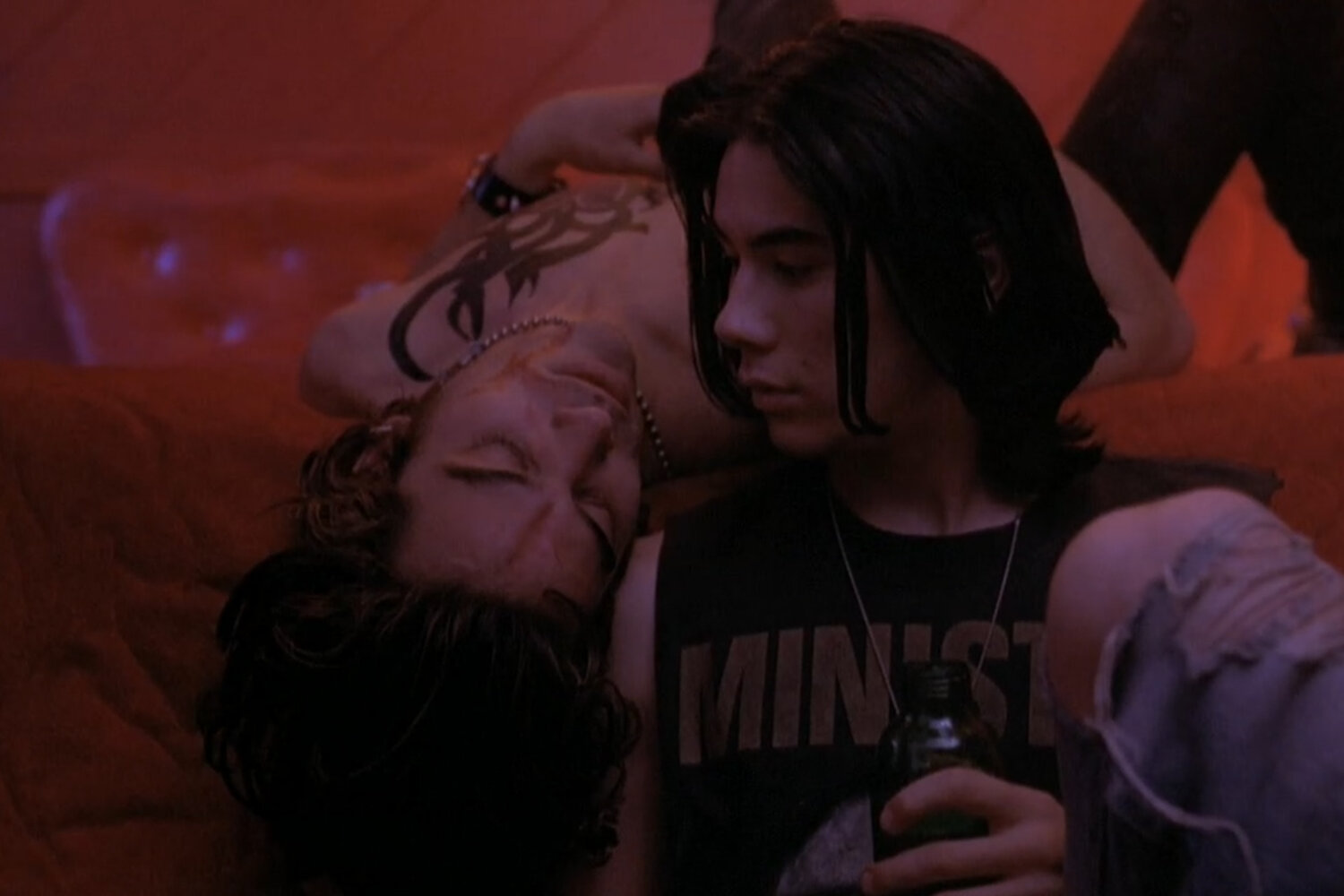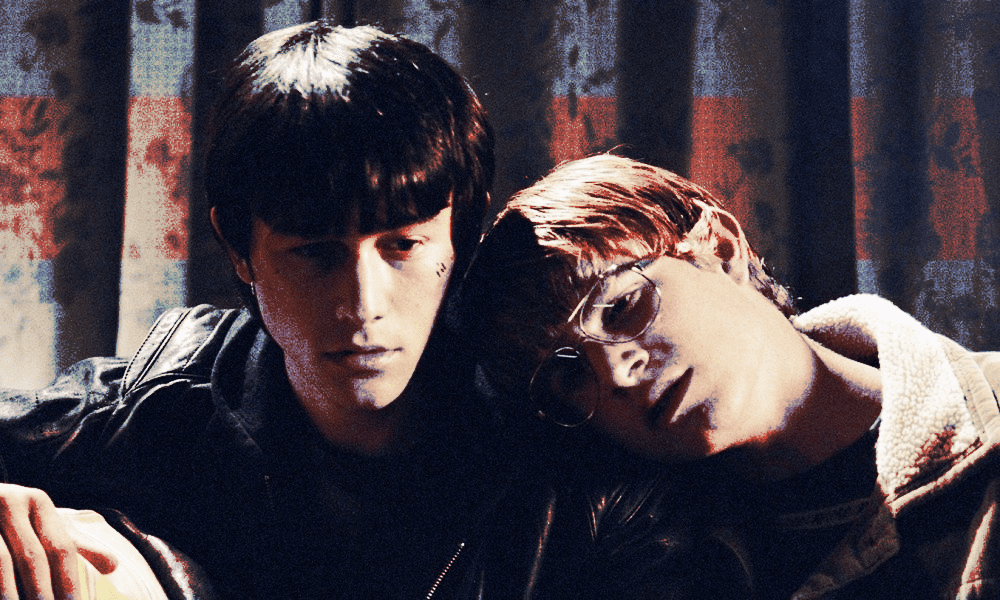Gregg Araki refused to sanitize the lives of queer people in his incendiary independent films. Charity Swales takes a closer look at the themes of loneliness and isolation in his work, in parallel with LGBTQ+ History Month.
When you think about queer cinema today, you think of Call Me by Your Name, Blue Is the Warmest Colour, Moonlight—films critically acclaimed in the mainstream media and benefitting from glitzy award wins. In the 90s, however, much of queer cinema was disenfranchised to the outskirts of indie cinema, depicting an unfettered and realistic representation of the queer experience, unencumbered by what the social milieu deemed acceptable. This influx of films, known as the New Queer Cinema movement, had many names associated with it. Some of the most prolific were Todd Haynes, Gus Van Sant, Cheryl Dunye, Derek Jarman—and Gregg Araki.
Gregg Araki’s early guerrilla films took advantage of this discrimination and ostracism from mainstream culture, creating a cinematic universe where those who felt loneliness through their sexuality could enjoy a sense of community. Works like Totally F***ed Up, Nowhere and Mysterious Skin played on this sense of pessimism, where young Americans fled the neo-conservative climes of a consumer-saturated urban society in a desperate effort to find love and freedom.

Exacerbated by the AIDS crisis, the queer community was looked upon with disdain in the 90s. Prominent politicians like Senator Jesse Helms were openly homophobic, labelling queer people as “weak, morally sick wretches.” Araki’s early work was, then, reactionary to these bigoted narratives that influenced the tone of society at the time. This is summarized neatly in a line in his film Totally F***ed Up: “What’s in? Bigotry, sexism, Jesus, homophobia, stupidity, violence, spiritual bullshit, making money. What’s out? Punk rock, abortion, sex.” Although attitudes to sexuality are now much more progressive, the struggle of making sense of your own identity in an increasingly chaotic and hopeless world still resonates deeply today.
This often blatant sexual discrimination is an issue Araki deconstructed in his own cinematic universe, where the queer community—as societal renegades—occupy and take solace in the transient spaces of gas stations. He celebrates the hedonism of being young and gay, while also appreciating the sense of isolation and loneliness sexuality can bring that is disrupted by the dissonance of a hateful society. Queerness in his films is celebrated and three-dimensional, rather than sublimated as the token gay character in mainstream cinema.
Read more: Love And Landscape In The Works Of Francis Lee
With an air of romance dripped in deadpan cynicism, his ‘Teen Apocalypse Trilogy’ (Totally F***ed Up, The Doom Generation and Nowhere) spun a pastiche of the coming-of-age drama by showing a world that resonated with those of us with no affinity with whoever Molly Ringwald was playing in the latest John Hughes movie. Araki’s films take vignettes of various queer protagonists, with non-linear narratives that felt both realist and surrealist at the same time. His work rejected narrative codes and conventional forms of storytelling.
The teenage protagonists in his films are often ‘on the road’—sexual outlaws with no fixed abode. See Mysterious Skin‘s Neil, the bisexual rent boy, or Xavier, the pansexual hitcher in The Doom Generation. There is a wrought sense of displacement that permeates Araki’s work. Blood-splattered and drenched in the lights of consumerist apocalypse America, the characters’ consummation of hedonistic subcultures and lifestyles look at queer stereotypes not as measures of heterosexual normalcy, but as models for queer youth to navigate their own sense of identity.

Cultural significance becomes the apex of each character’s universe, challenging mainstream ideology. Not only do his films make reference to other mediums of queer culture like Stephen Frears’ My Beautiful Laundrette and the beat poets, but Araki is unparalleled at matching soundtracks that flit between the ephemeral and primal. Shoegaze, post-punk and industrial from bands such as Slowdive, Jesus and The Mary Chain and Nine Inch Nails guide and shape the overall mood that defines key moments in the films. It’s a culture that is interconnected to Araki’s own identity as a queer man, with the pop-culture references utilised to construct an outside feel to the interiority of his work.
However, there is a level of violence that disrupts each character’s journey. In Dark’s sexual awakening in Nowhere, his lover explodes into blood and turns into a cockroach; in Araki’s self-proclaimed heterosexual movie The Doom Generation, Jordan is castrated by a gang of Neo-Nazis, played by 90s industrial band Skinny Puppy. Once the characters manage to find solace and sexual stability, it combusts before them as bigoted, hateful members of society invade their social milieu. Anyone who identifies on the LGBTQ+ spectrum may feel a kinship with this, acutely aware that this is often the case.
At first glance, like many early critics, it would be easy to dismiss Gregg Araki’s film as self-loathing, messy and needlessly abrasive. However, the characters’ non-linear stories offer the most true depiction of what it is to be LGBTQ+: lonely, messy and in search of companionship. It was the first time I truly saw cinematic representation of bisexuality and pansexuality in a way that wasn’t sensationalized for a straight audience.
And to all the homophobes that are still given a platform in mainstream media, in the words of The Doom Generation’s Amy Blue: “Eat my Fuck!”.
Words by Charity Swales
We’re trying to raise £200 a month to help cover our operational costs. This includes our ‘Writer of the Month’ awards, where we recognise the amazing work produced by our contributor team. If you’ve enjoyed reading our site, we’d really appreciate it if you could donate to The Indiependent. Whether you can give £1 or £10, you’d be making a huge difference to our small team.
